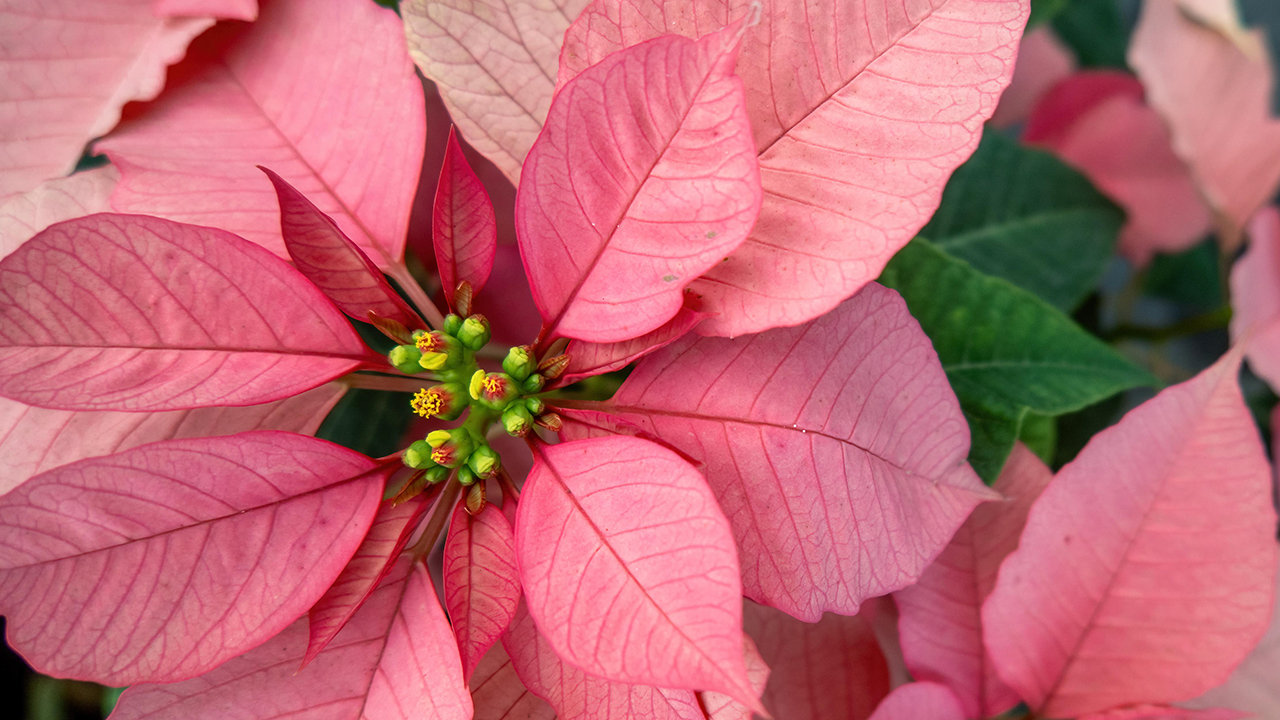
As the holiday season approaches, the iconic poinsettia often comes to mind with its vibrant red and green foliage, a symbol synonymous with festive cheer.
Until recently, poinsettias have been known for their photoperiodic nature, requiring specific periods of uninterrupted darkness to develop their colorful bracts.
Recent horticultural advancements have led to new poinsettia varieties that defy this requirement, offering new opportunities for growers and consumers alike.
These new breeds of poinsettias are engineered to be daylength-independent, meaning their colorful transformation is not triggered by the shortening days of the winter season.
Beyond the classic red, these new poinsettias come in an array of colors and patterns. From creamy whites to speckled pinks and even marbled bracts, the palette has expanded, catering to a broader range of tastes and decorative themes.
Color diversification also means that poinsettias can now match a wider variety of interior designs, making them more appealing to modern consumers.
Daylength-independent poinsettias also offer environmental benefits. Growers can reduce the use of blackout curtains and decrease light pollution, which is beneficial for nocturnal wildlife.
Additionally, these varieties reduce the energy consumption required for creating artificial light cycles, aligning with the growing demand for more sustainable horticultural practices.
As these non-photoperiodic poinsettias gain popularity, we can expect an evolution in how these plants are marketed and enjoyed.
Horticulturists are already foreseeing a future where poinsettias become a staple in gardens and homes throughout the year, rather than just seasonal accents.
The advent of daylength-independent poinsettias represents a vibrant new chapter for this beloved plant.
With these varieties, the poinsettia is set to transcend its seasonal fame and bloom in horticultural prominence throughout the year.

About The Author
John Bagnasco has been in the gardening industry for over 50 years, starting with a horticulture degree from Michigan State University and following a stint at Frank’s Nursery and Crafts in Detroit.
After publishing his first book “Plants for the Home Vol. I” in 1976, he moved to California to become regional manager and buyer for the Nurseryland division of Sunbelt Nursery Group.
He then became the head buyer for Armstrong Garden Centers based in Glendora, California. John had a part-time affiliation with Creative Promotions for ten years before joining them full-time in October 2000 as a senior editor and radio personality for Garden Compass.
John has also taught horticulture classes at Palomar College and San Diego State University.
He is the host of the DVD “The Essential Guide to Roses,” which also features Bryan Main and Bruce and Sharon Asakawa.
His most recent book is “Planting Designs for Cacti and Succulents”.
Currently, John is a co-host on “Garden America,” an interactive live gardening show that additionally provides podcasts of the broadcasts accessible on all major platforms.
You can contact John here.
